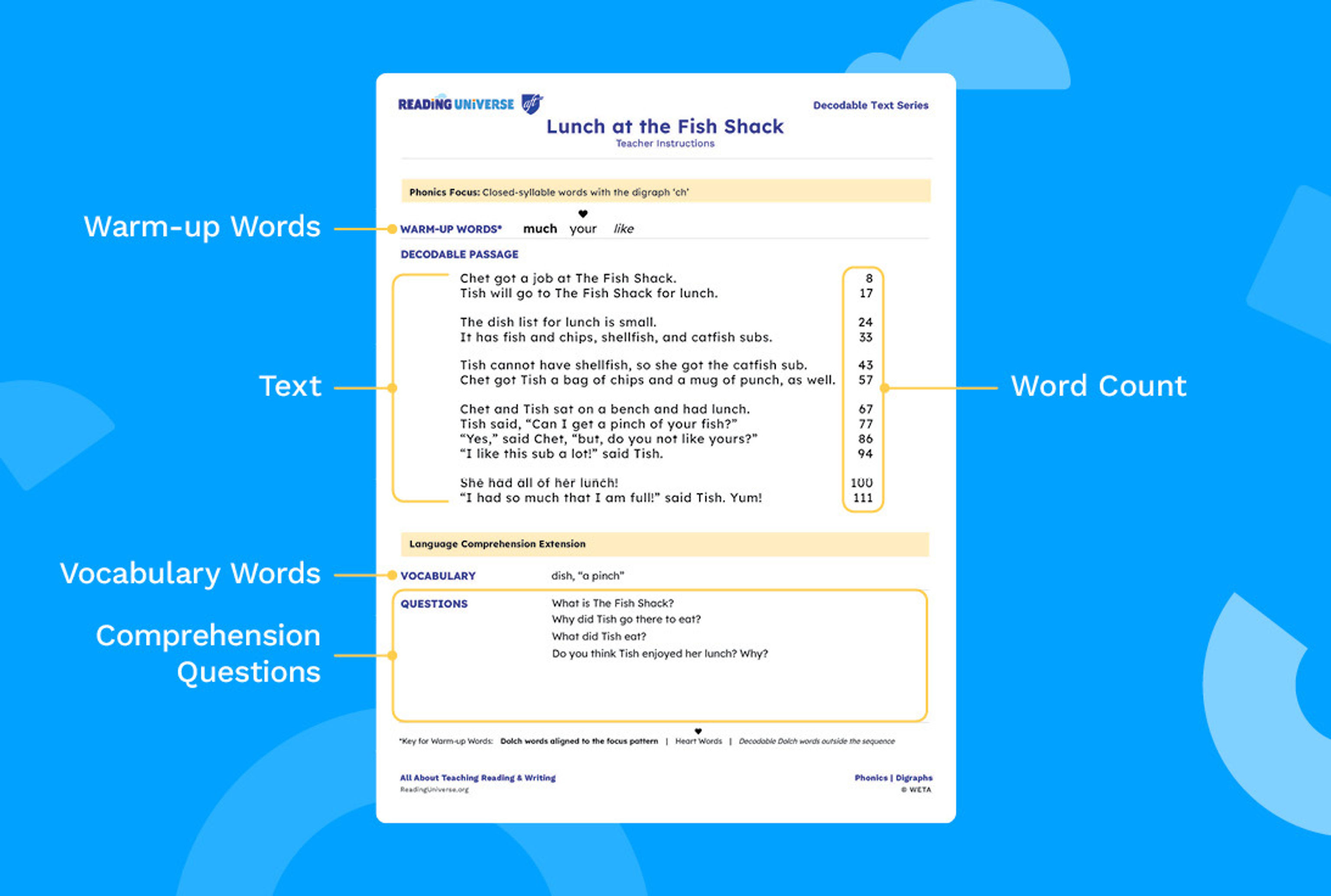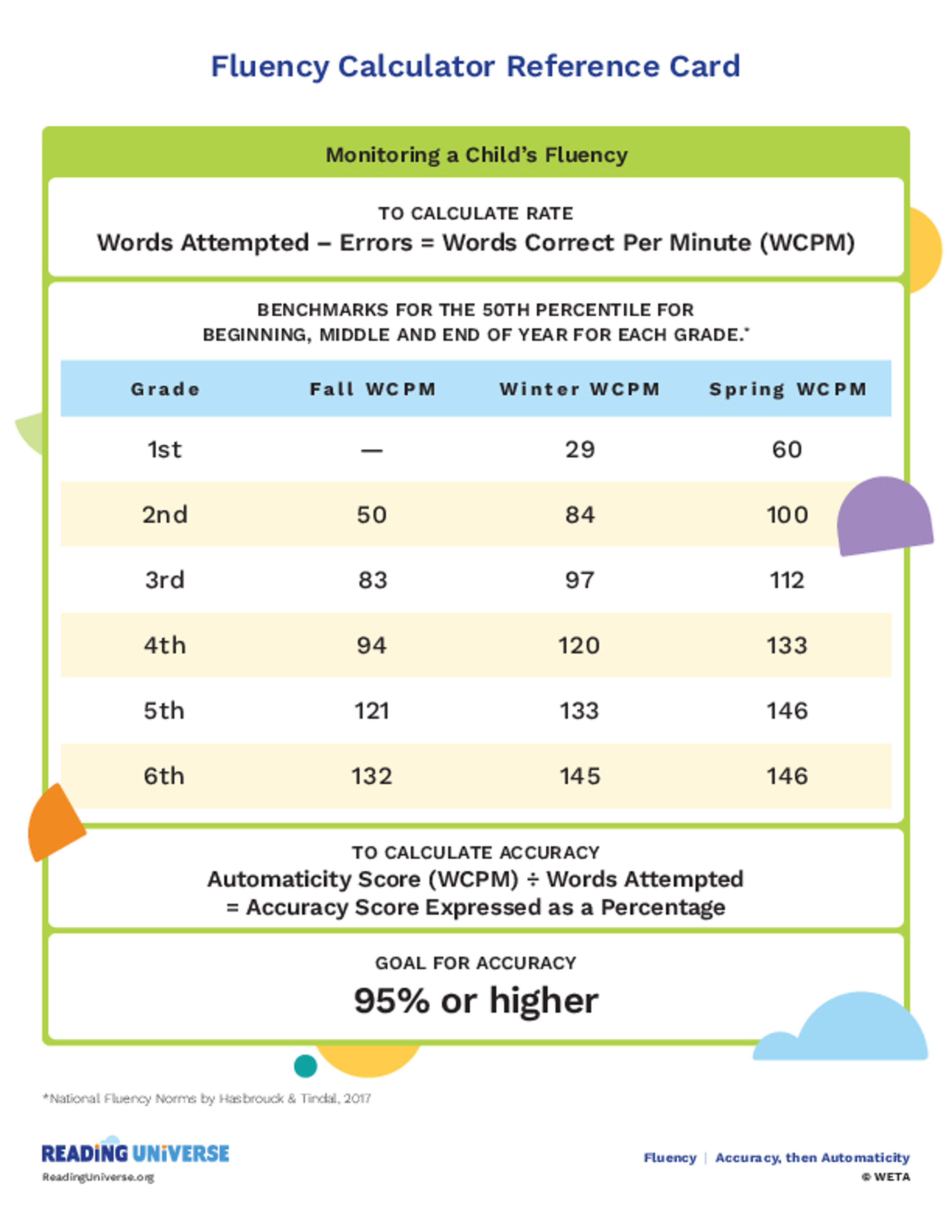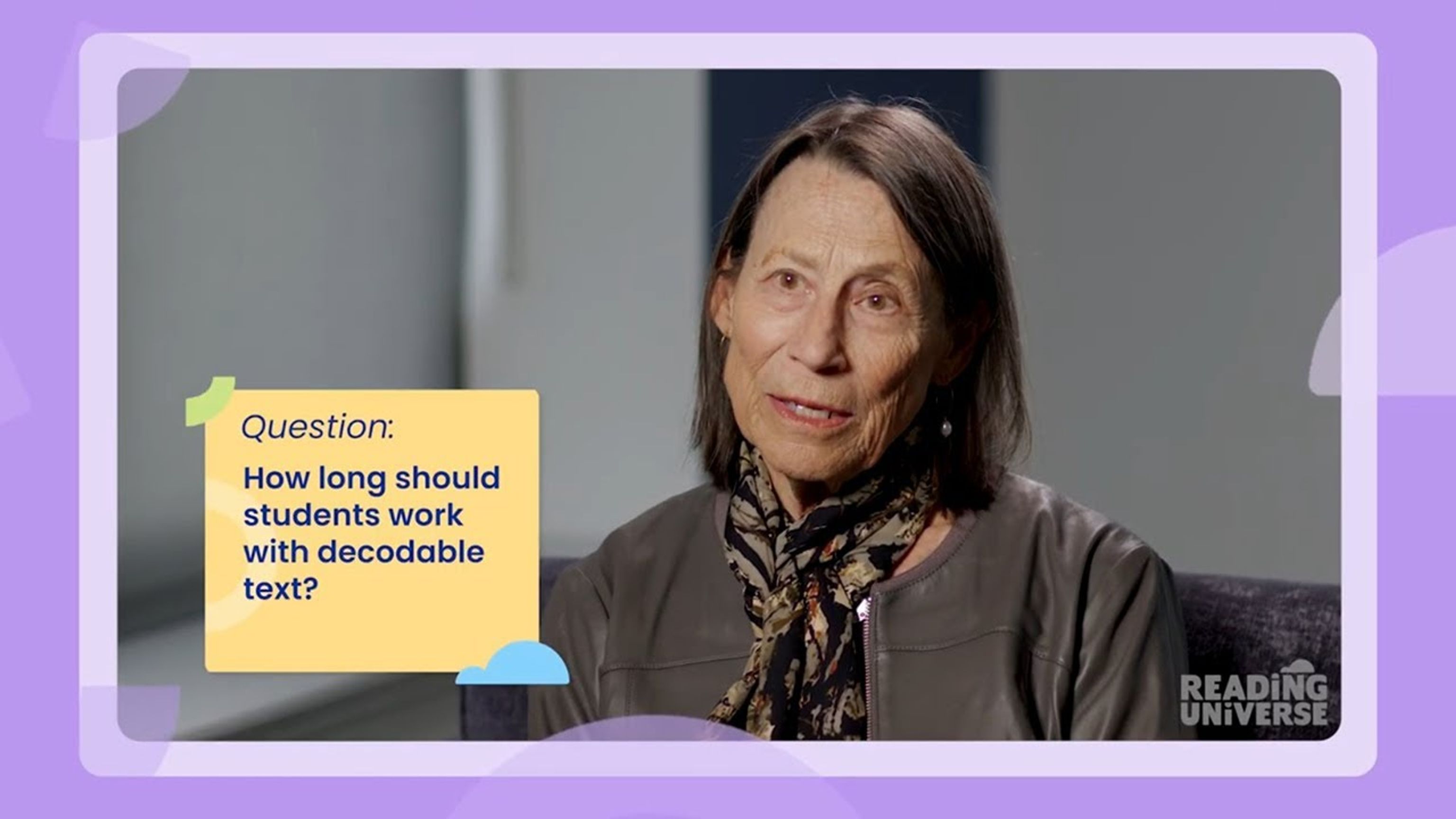
sšsšsš
How to Use Decodable Texts
Decodable texts are simple passages or books made for beginning readers that serve a specific and critical purpose: lots of practice sounding out and reading new words with phonics patterns that you have explicitly taught.
Here's an excerpt from "The Field Trip to the Zoo," a decodable text from Reading Universe that focuses on the vowel teams 'oo', 'ew', 'ue', and 'ou' — representing the sound /oo/ as in food, chew, blue, and group.
Summer break was almost here, and the school had planned an end-of-year trip for the students. Hugo's first grade class was on their way to the zoo. The students were ecstatic!
It was a cool June morning at the zoo, and very few people had arrived yet. Soon the zoo would be full of visitors. The class entered through the gates bursting with energy.
As children learn new sounds, high-frequency words, and spelling patterns during reading instruction, they need the chance to see them in connected text. A decodable text series carefully integrates all of these in sequence with students' lessons, providing practice opportunities that will build accuracy, fluency, and — ultimately — mastery.
The simplified format and words of decodable texts encourage students to sound out words using the decoding strategies from their structured literacy lessons. Students learning the short 'a' vowel sound, for example, would encounter lots of words that contain the short 'a' sound spelled with a single letter a — CVC words like cat, man, and had.
In addition to teaching students how to blend, segment, and read new words, decodable texts can boost students' confidence.
"Children want to be self-reliant readers and are delighted when they can apply what they know," says reading researcher Dr. Louisa Moats. "Decodable texts give them that chance to feel like a reader!"
We have a free collection of 83 decodable texts organized by phonics skill. Want to jump straight to the series? With our decodable text scope and sequence, you can find decodable texts for the patterns you're teaching or have already taught. You can use the Reading Universe decodable texts series with whatever phonics curriculum your school is using.
Steps for Using Decodable Texts in Your Reading Instruction
Most decodable texts follow a simple format. Each text in the Reading Universe series features teacher and student pages side-by-side.
Let's take a closer look at "Lunch at the Fish Shack."
- The teacher page features a list of warm-up words, a word count alongside the text for tracking student accuracy, and a section to extend and integrate language comprehension with prompts for vocabulary and comprehension questions.

- The student page is much simpler, showing just the warm-up words, the text, and — sometimes — a fun illustration to add visual appeal (not meant to be used to help children guess what the story is about).

When should you start reading decodable texts with students? As soon as you have introduced enough letters and sounds to begin reading a set of carefully selected words. Once you're rolling along with the introduction of new spelling patterns, reading decodable texts should happen daily.
Step 1: Select a Text
The Reading Universe decodable text series follows a recommended scope and sequence based on the frequency and difficulty of spelling patterns. Scan our scope and sequence to find the decodable text that matches the patterns you're teaching. For example, if you're teaching the trigraph '-dge,' you'd choose the story "Mudge and the Fudge."
Step 2: Start Your Lesson with the Warm-Up Words
First you'll tackle the warm-up words, giving students an opportunity to read them in isolation before they read them in the passage. Here is an example of the warm-up words from "A Picnic with Pals," a decodable text that focuses on two-syllable words that end in a 'y' (representing the long 'e' sound), like lucky and fuzzy.

Not all warm-up words are the same:
- Some warm-up words, like study, align to the phonics focus pattern. They will always appear first in the list.
- Words with a heart over them, like give and have, indicate words that are irregularly spelled, partially decodable, and occur frequently in text. Students only need to learn the irregularly spelled portion by memory or "by heart" — in the word give, 'ive' is pronounced /ĭv/.
- Words in italics, like time, are outside the sequence of the decodable series and are included because they help form a coherent story. When you get to these words in the warm-up, you can tell students what the word says so that they do not guess.
Model reading each warm-up word, pointing as you read it aloud. Next, invite children to join you in reading the words together and then on their own. Provide support and feedback as needed, encouraging them to point to the words as you read aloud together.
Step 3: Read the Decodable Passage
At this point, you are ready to read the passage to your students. This can be done as a whole class, where every student has a copy of the text on their desk and you have a copy displayed on the board, or in small groups or one-on-one.
Model reading the passage with appropriate phrasing and intonation aligning with the punctuation.
Invite children to join you in reading the passage together, making sure they are pointing to the words as they read, while you provide support and feedback as needed. Depending on the student you are working with, you may need to read one sentence at a time, a few sentences at a time, or a paragraph at a time.
You may ask individual students to read a section or all of the passage aloud, providing support and feedback as needed. Whenever anyone is reading, all children should be attending to the print by pointing to the words. This adds to individual practice!
Step 4: Develop Language and Reading Comprehension Skills, Too!
Reading decodable text is for students to practice their decoding abilities, but it's also an important opportunity for students to learn new vocabulary and think about meaning.
Each decodable text comes with a language extension section to help develop comprehension after students have accurately decoded the text. This includes vocabulary words from the passage and comprehension questions. While optional, the language extension helps interconnect the phonics and language comprehension skills students need for independent reading.
Step 5: Measure Students' Speed and Accuracy
Decodable passages can also be used to measure accuracy and fluency. Numbers at the end of each line provide a word count, helping you track the number of words students read correctly. While regular timed readings aren't recommended with connected text until the middle of first grade, the word counts from decodable text can help you begin to measure accuracy and rate and can incentivize children to build fluency.
Follow these steps to calculate individual students' accuracy, with the goal being 95 to 100 percent accurate:
- Encourage students to be accurate, not speedy. Rate should be at the speed of conversation. Begin the timer when the student utters the first word in the passage. Mark each word that they stumble over or read incorrectly. When students finish reading the passage, record their total reading time.
- To find how many words were read correctly, subtract the number of errors from the total number of words in the passage.
- Next, find the accuracy rate (expressed as a percentage) by dividing words read correctly by the total number of words in the passage. For example, if they read 90 words accurately out of 100, their accuracy rate would be 90 divided by 100, or 90 percent.
Note: When calculating
If you need a little more help, check out our fluency calculator reference card.

Fluency Calculator Reference Card
This free printable resource for teachers is designed to assist in monitoring students' progress in reading fluency, an important contributor to reading comprehension.
Watch Dr. Louisa Moats discuss how long students should use decodable texts and how to know when it's time to move on.

Produced by Reading Universe, a partnership of WETA, Barksdale Reading Institute, and First Book
What the Research Says About Decodable Texts
- A 2005 study by Heidi Anne E. Mesmer, Ph.D., found that first graders who were learning phonics and using highly decodable texts were more likely to employ their sound-letter knowledge than those using less decodable texts. These students also tended to read more words accurately and need less help getting through a text.
- But research on decodable texts is mixed, literacy expert Timothy Shanahan, Ph.D., points out. A 2010 study by Dr. Mesmer found that first graders who read leveled – rather than decodable – texts read more fluently. And a 2004 study by Joseph R. Jenkins, Ph.D., and colleagues found that the use of more or less decodable texts made no difference on reading performance.
- Many experts still see immense value in using decodable texts as they build confidence in early readers, provide phonics practice in context, and move students away from using pictures as aids in decoding.
- Decodable texts should be used for a short period of time – like "training wheels," Dr. Mesmer told Education Week in 2020 – and then students should read authentic texts.
- There's agreement that students also need exposure to high-quality literature with complex vocabulary and structure. Parents and teachers should read to students daily.
Find all of the free Reading Universe decodable texts here.
Related Content


